Indoor greenhouse gardening for mushrooms opens up incredible possibilities for year-round cultivation, regardless of outdoor climate or space limitations. Whether you're using a simple humidity tent, a Martha-style fruiting chamber, or a sophisticated automated system, mastering indoor greenhouse techniques transforms your mushroom growing from hit-or-miss hobby to reliable food production.
This comprehensive guide delivers essential tips for creating and maintaining the perfect indoor greenhouse environment for mushrooms. You'll discover how to control humidity, optimize ventilation, manage temperature, and troubleshoot common problems—all while maximizing yields and minimizing maintenance. From budget-friendly DIY setups to premium automated systems, these proven techniques ensure your indoor mushroom greenhouse produces abundant harvests flush after flush.
Ready to elevate your mushroom cultivation game? Let's explore the critical strategies that separate successful indoor greenhouse growers from frustrated beginners.
Understanding Indoor Greenhouse Systems for Mushroom Growing
Indoor greenhouse gardening for mushrooms differs fundamentally from traditional plant cultivation. Mushrooms thrive in conditions opposite what most plants need—high humidity, minimal light, cooler temperatures, and excellent air circulation.
What Makes Mushroom Greenhouses Unique
Unlike vegetable greenhouses maximizing sunlight and warmth, mushroom growing chambers create forest-floor conditions: dark, humid, and consistently cool. This means traditional greenhouse advice doesn't apply. Mushroom greenhouses prioritize humidity retention, CO2 removal, and temperature stability over light penetration and heat accumulation.
The term "Martha" has become synonymous with mushroom fruiting chambers in cultivation communities—named after the Martha Stewart brand of mini-greenhouses that growers adapted for fungi cultivation. These setups demonstrate how readily available greenhouse equipment can be repurposed specifically for mushrooms.
Types of Indoor Greenhouse Systems
Basic Shotgun Fruiting Chambers (SGFC): Clear plastic bins with holes drilled throughout for air exchange, filled with moist perlite at the bottom. Cost: $20-50. Best for: 1-4 small grow kits or jars.
Mini-Greenhouses (4-Tier Martha Setups): Multi-shelf units (typically 2-4 feet tall) with plastic covers, integrated humidifiers, and fans. Cost: $100-250. Best for: Multiple fruiting blocks, scaling up production.
Grow Tents: Purpose-built fabric tents with zippers and vent ports designed for controlled environment growing. Cost: $150-400. Best for: Dedicated growing spaces with professional results.
Smart Automated Chambers: Sophisticated systems with app controls, sensors, and complete environmental automation like the LYKYN Smart Mushroom Grow Kit. Cost: $300-500+. Best for: Consistent results with minimal daily maintenance.
DIY Converted Spaces: Closets, spare bathrooms, or dedicated rooms outfitted with humidity and ventilation equipment. Cost: Varies widely. Best for: Large-scale production or permanent installations.

Essential Tip #1: Master Humidity Control—The Foundation of Success
Humidity management represents the single most critical factor in indoor mushroom greenhouse gardening. Get this right, and most other challenges become manageable. Get it wrong, and even perfect temperature and ventilation won't save your grow.
Target Humidity Ranges by Species
Different mushrooms require different humidity levels:
- Oyster mushrooms: 85-95% RH (relative humidity)
- Shiitake: 80-90% RH
- Lion's Mane: 85-95% RH (very sensitive to dryness)
- Reishi: 80-90% RH
- King Trumpet: 90-95% RH
Most growers target 85-90% as a universal range that works well for commonly cultivated species.
Methods for Creating Humidity
Manual Misting: The simplest approach uses fine-mist spray bottles to maintain moisture. Advantages: No equipment cost, complete control. Disadvantages: Requires 2-4 sessions daily, risks contamination from repeated opening, inconsistent results.
Ultrasonic Humidifiers: These devices create cool fog through high-frequency vibrations. Look for units with:
- Large capacity (4-8 liter tanks) to reduce refill frequency
- Output nozzles that connect to hoses/pipes
- Adjustable fog output levels
Position humidifiers outside your greenhouse when possible, piping humidity in through PVC or flexible ducting. This prevents electrical components from water damage and allows easier access for refills.
Humidity Controllers: Invest in digital humidity controllers (like Inkbird models) that automatically turn humidifiers on/off based on sensor readings. Set parameters to your target range (e.g., humidifier activates at 82%, deactivates at 88%).
This automation prevents over-humidification that causes bacterial issues while ensuring humidity never drops to damaging levels. The $30-50 investment pays dividends in improved consistency and reduced attention requirements.
Perlite Beds: For smaller chambers, a 4-inch layer of hydrated perlite at the chamber bottom provides passive humidity through evaporation. Mist the perlite (not mushrooms directly) to rehydrate as needed.
Monitoring and Troubleshooting
Place hygrometers (humidity meters) at mushroom level—not at chamber top or bottom where readings may be inaccurate. Digital hygrometers with remote sensors provide real-time monitoring without opening chambers.
Signs of Low Humidity:
- Cracked or browning mushroom caps
- Stunted growth or premature pinning
- Mushrooms that stop developing midway
Signs of Excessive Humidity:
- Bacterial blotch (wet, slimy spots on mushrooms)
- Mold growth on chamber walls
- Mushrooms that rot before maturing
- Pooling water at chamber bottom
The LYKYN system solves humidity challenges through integrated sensors and ultrasonic humidifiers that maintain optimal levels automatically, eliminating the daily guesswork and manual adjustment that frustrates many growers.
Essential Tip #2: Optimize Fresh Air Exchange Without Losing Humidity
Mushrooms face a fascinating paradox: they need high humidity but also substantial fresh air. As fruiting bodies develop, they consume oxygen and release carbon dioxide—just like animals. Without adequate air exchange, CO2 accumulates, causing deformed mushrooms with long, spindly stems and tiny caps.
Understanding the Challenge
Traditional greenhouses exchange air through vents and fans, which works fine for plants. But opening vents on mushroom chambers instantly drops humidity to problematic levels. The secret lies in exchanging air while maintaining moisture—the hallmark of well-designed indoor greenhouse systems.
Passive Air Exchange Methods
Polyfill Stuffing: Loosely stuff filter material (like polyfill from craft stores) into chamber ventilation holes. This allows air movement while slowing moisture escape. Adjust density to balance humidity retention with air exchange.
Hole Placement Strategy: In simple fruiting chambers, drill holes throughout—including lid and all sides—but position them thoughtfully:
- Lower holes allow fresh air intake
- Upper holes enable CO2 exhaust (it's heavier than air and sinks)
- Side holes promote horizontal air circulation
Space holes 2 inches apart for optimal exchange. Too few holes chokes mushrooms; too many destroys humidity.
Active Air Exchange Systems
Small Fans: USB-powered computer fans (5-12 volts) provide gentle air movement without excessive turbulence. Position fans to:
- Pull fresh air from outside the chamber
- Push humid air throughout the growing space
- Exhaust stale air from the top
Run fans on timers (15 minutes on, 45 minutes off is a common cycle) rather than continuously. This balances fresh air needs with humidity conservation.
Exhaust and Intake Coordination: More sophisticated setups use coordinated exhaust fans (removing CO2 from the top) and intake fans (bringing fresh air from bottom), with humidity piped between them. This creates consistent air flow patterns that optimize both gas exchange and moisture levels.
PVC Ducting Systems: Many growers connect their humidifier output, intake fan, and greenhouse through PVC T-joints or cross-fittings. This delivers humidified fresh air directly into the chamber while exhausting from another point—solving both challenges simultaneously.
Recognizing Poor Air Exchange
Watch for these telltale signs of insufficient fresh air:
- Elongated, thin stems with small caps
- "Coral-like" or "fuzzy" growth patterns
- Mushrooms that fail to fully expand
- Strong mushroom odor inside the chamber
Healthy mushrooms in well-ventilated chambers develop proper proportions—thick stems with full, rounded caps.
Species-Specific Considerations
Some mushrooms tolerate lower air exchange than others:
- Oyster mushrooms: Highly tolerant, grow well with moderate ventilation
- Shiitake: Need good air flow for proper cap formation
- Lion's Mane: Very sensitive; poor air exchange causes stringy growth
- King Trumpet/Enoki: Actually prefer higher CO2 (lower air exchange) for characteristic long stems
Research your specific species' requirements. What works perfectly for oysters might be wrong for king trumpets. Our Lion's Mane cultivation guide provides species-specific environmental recommendations.
Essential Tip #3: Maintain Stable Temperature Ranges
Temperature control often receives less attention than humidity, yet it profoundly impacts success. Unlike humidity that needs constant high levels during fruiting, temperature requirements vary by growth phase and species.
Ideal Temperature Ranges
General Fruiting Temperatures:
- Cool-loving species (shiitake, oysters): 55-65°F (13-18°C)
- Moderate species (most gourmet varieties): 60-70°F (16-21°C)
- Warm-loving species (pink oyster): 70-85°F (21-29°C)
Most homes naturally maintain 68-72°F—perfect for many mushroom species without additional heating or cooling.
Temperature and Growth Phases
Colonization Phase (mycelium growing through substrate): Most species prefer warmer temperatures (70-80°F) to speed colonization. This phase happens before fruiting, so it's less relevant for kit growers starting with pre-colonized blocks.
Pinning Initiation (triggering mushroom formation): A temperature drop of 5-10°F often triggers pinning. This simulates autumn conditions when mushrooms naturally fruit. Some growers refrigerate blocks for 12-24 hours, then return to growing temperature to shock them into fruiting.
Fruit Body Development: Maintain consistent temperatures in the species-specific range. Fluctuations of more than 10°F daily stress developing mushrooms, potentially causing aborts (mushrooms that stop growing and die).
Managing Temperature Challenges
Too Cold:
- Use reptile heating mats under (not touching) growing containers
- Place oil-filled radiator heaters near (not in) chambers
- Grow in naturally warmer home areas (kitchens, living spaces)
- Insulate chamber exteriors with reflective bubble wrap
Too Warm:
- Move chambers to cooler locations (basements, north-facing rooms)
- Run grow operations during cooler months
- Use small air conditioning units for dedicated grow rooms
- Increase air exchange to remove heat buildup
Temperature Monitoring
Place thermometers at mushroom level inside chambers. Remote-reading thermometers allow monitoring without opening chambers and losing humidity.
Automated systems track temperature continuously, providing data to optimize your setup. The LYKYN chamber's app monitoring shows temperature trends, helping you identify and solve problems before they impact harvests.
Essential Tip #4: Provide Appropriate Lighting Conditions
Mushrooms don't photosynthesize, leading many beginners to assume they can grow in complete darkness. While mushrooms don't need light for energy, they do require some illumination for proper development.
Why Mushrooms Need Light
Light serves as an environmental cue that mushrooms use for:
- Directional growth: Mushrooms grow toward light sources, helping them orient upward
- Proper cap formation: Adequate light encourages broad, properly-shaped caps
- Color development: Some varieties (especially blue oysters) develop full coloration only with sufficient light
Think of light as a signal, not an energy source. Mushrooms need enough to "know which way is up" and that they've reached an appropriate fruiting location.
Ideal Lighting for Indoor Greenhouses
Natural Indirect Light: Position greenhouses near windows where they receive ambient daylight but never direct sun. North-facing windows work excellently in the Northern Hemisphere. Direct sunlight raises temperatures dangerously and dries out chambers rapidly.
Artificial Lighting: For darker locations (basements, closets), use:
- LED grow lights (6500K color temperature)
- Compact fluorescent bulbs
- Standard LED household bulbs
Mushrooms need far less light intensity than plants. If you can comfortably read a book in the space, there's sufficient light for mushrooms.
Duration: Provide 8-12 hours of light daily during fruiting. Use timers for consistency. Unlike plants' precise photoperiod requirements, mushrooms tolerate flexible schedules—just avoid complete darkness or 24-hour lighting.
Light-Specific Issues
Insufficient Light:
- Pale, washed-out colors (especially noticeable in blue oysters)
- Elongated stems
- Poorly-formed caps
Excessive Light:
- Direct sunlight causes overheating and rapid moisture loss
- Very bright lights can discourage pinning in some species
Species Variations:
- Oyster mushrooms: Respond well to light, develop better with 12 hours daily
- Shiitake: Less light-dependent, will fruit with minimal lighting
- Lion's Mane: Benefits from moderate light for proper development
- Reishi: Very light-sensitive; excessive light affects growth patterns
Position LED strip lights outside clear greenhouse covers to provide illumination without introducing heat into the chamber. Many Martha tent setups mount lights on the frame exterior or on shelves above mushroom levels.
Essential Tip #5: Choose the Right Greenhouse Size for Your Scale
Matching greenhouse size to growing scale prevents common frustrations—too small and you can't accommodate your production goals; too large and you waste resources maintaining unnecessary volume.
Small-Scale Growing (1-4 Kits)
Best Option: Shotgun fruiting chambers or compact 2-3 tier greenhouses
Dimensions: 24" x 16" x 12" (clear storage bins) or 2-3 shelf units approximately 18" x 12" x 36"
Perfect For:
- Beginners testing mushroom growing
- Apartment dwellers with limited space
- Casual growers wanting fresh mushrooms occasionally
- Single kit management
Advantages: Low cost ($20-60 complete), fits on countertops, easily stored when not in use, simple to maintain.
Limitations: Limited production capacity, frequent refilling if using humidifiers, can't efficiently run multiple species simultaneously.
Medium-Scale Growing (5-12 Kits/Blocks)
Best Option: 4-5 tier Martha greenhouse with automation
Dimensions: Approximately 27" x 19" x 63" (standard 4-tier) or 5-tier models going to 75" height
Perfect For:
- Serious hobby growers
- Regular mushroom consumers
- Those growing for family/gifting
- Growers running multiple species
- Trying different varieties simultaneously
Advantages: Accommodates multiple blocks at different stages, automation reduces daily time investment, vertical design saves floor space, professional results.
Setup Costs: $150-300 including greenhouse, humidifier, fans, controllers, and ducting.
Learn more about managing multiple growth stages in our beginner mushroom growing guide.
Large-Scale Growing (15+ Kits/Blocks)
Best Option: Grow tents, converted closets, or dedicated rooms with comprehensive environmental control
Dimensions: 4' x 4' x 6.5' grow tents or entire spare rooms (8' x 10' typical)
Perfect For:
- Market growers selling mushrooms
- Serious enthusiasts maximizing production
- Growing for restaurants/farmers markets
- Multiple species in dedicated zones
Advantages: Maximum production capacity, zone different areas for different species, professional-grade results, efficient workflow for processing large harvests.
Considerations: Higher upfront costs ($400-1500+), requires dedicated space, increased time for maintenance even with automation, utility cost increases (electricity for lighting, humidifiers, fans).
The Smart Alternative: Automated All-in-One Systems
The LYKYN Smart Mushroom Grow Kit represents a different approach—purpose-built for mushroom cultivation rather than adapted greenhouse equipment. With integrated sensors, app controls, and optimized airflow, it delivers professional results in a compact footprint without the DIY hassle of building Martha setups.
For growers who value time over cost savings, automated solutions eliminate the trial-and-error phase while consistently producing excellent results from the first grow.
Essential Tip #6: Implement Proper Sanitation and Contamination Prevention
Indoor greenhouses create ideal conditions not just for mushrooms, but potentially for competing molds and bacteria. Sanitation protocols protect your investment and ensure harvests reach maturity.
Pre-Grow Sanitation
Initial Chamber Cleaning:
- Wash all greenhouse components with mild soap and water
- Rinse thoroughly and dry completely
- Wipe down with 70% isopropyl alcohol or dilute bleach solution (1:10 bleach:water)
- Allow complete drying before use
Between-Flush Cleaning:
- Remove spent substrate immediately after final harvest
- Wipe interior surfaces with sanitizing solution
- Clean and refill humidifiers with fresh water
- Replace any filter materials showing mold or contamination
- Air out chamber for 24 hours before introducing new blocks
Ongoing Contamination Prevention
Hand Hygiene: Wash hands thoroughly with soap before any chamber interaction. Consider wearing disposable gloves when harvesting or adjusting blocks.
Clean Water: Use distilled or filtered water in humidifiers. Tap water minerals create white dust and may harbor bacteria. Change humidifier water every 2-3 days minimum.
Proper Ventilation: Good air exchange prevents humidity-loving molds from establishing. Stagnant, excessively humid air invites contamination.
Avoid Direct Contact: Mist chamber walls and air above mushrooms, not fruiting bodies directly. Excessive water on developing mushrooms promotes bacterial blotch.
Recognizing Common Contaminants
Green Mold (Trichoderma): Bright green, spreads rapidly, produces musty smell. Most common contaminant. Usually indicates issues before mushroom kit was placed in chamber.
Black Mold (Aspergillus): Black spots or patches, more common in extremely humid conditions or poor air exchange.
Bacterial Blotch: Wet, slimy spots on mushroom caps, often brown or yellow. Caused by excessive moisture on developing mushrooms.
Pink Mold (Neurospora): Bright pink-orange, extremely aggressive. Indicates severe contamination; discard affected materials immediately.
If Contamination Appears:
- Remove contaminated blocks from chamber immediately
- Deep clean entire chamber before introducing new blocks
- Review environmental conditions—contamination often indicates humidity or air exchange issues
- Consider whether blocks arrived contaminated versus contamination occurring in your setup
Quality kits from reputable suppliers rarely arrive contaminated. The LYKYN system's sealed environment and HEPA filtration minimize contamination exposure during the entire growing cycle.
Essential Tip #7: Master Maintenance Schedules and Daily Routines
Successful indoor greenhouse gardening requires consistent routines. Mushrooms respond poorly to erratic care—feast or famine watering, forgotten misting, or neglected chambers produce disappointing results.
Daily Maintenance Tasks (Manual Systems)
Morning Routine (5-10 minutes):
- Check humidity levels (should be 85-90%)
- Mist chamber interior if humidity below target
- Observe mushrooms for growth changes
- Note any unusual colors, smells, or mold spots
- Open chamber briefly to exchange air (if not automated)
- Photograph mushrooms to track growth
Evening Routine (5-10 minutes):
- Check humidity again (may drop during warmer afternoon hours)
- Mist if needed
- Assess whether mushrooms need harvesting (caps fully expanded)
- Refill humidifier reservoir if necessary
- Adjust any environmental controls based on mushroom response
Weekly Maintenance Tasks
- Deep clean humidifier (prevent mineral buildup and bacteria)
- Change humidifier water completely
- Check fan operation and clean any dust accumulation
- Inspect all ducting for condensation or blockages
- Review humidity/temperature logs to identify patterns
- Assess whether ventilation or humidity needs adjustment
Automated System Advantages
Smart systems like LYKYN dramatically reduce daily time investment:
- No manual misting (automated humidification)
- App notifications for refill needs
- Continuous monitoring without opening chamber
- Data logging shows trends without manual tracking
Daily check-ins become quick app reviews rather than hands-on intervention. This consistency produces superior results while respecting busy schedules.
Seasonal Adjustments
Winter Considerations:
- Lower ambient humidity requires more aggressive humidification
- Heating systems dry air further
- May need to increase humidifier output or misting frequency
- Shorter days mean supplemental lighting becomes more important
Summer Considerations:
- Higher temperatures may require cooling strategies
- Natural humidity may be higher (less humidification needed)
- Increased air exchange prevents heat buildup
- Position chambers away from direct sun exposure
Harvest Timing Windows
Mushrooms wait for no one—they double in size daily during peak growth. Missing optimal harvest windows by even 12-24 hours can mean:
- Over-mature mushrooms (tougher texture, less flavor)
- Spore release (messy, suppresses additional pins)
- Caps that invert or flatten (less visually appealing)
Check mushrooms morning and evening during active fruiting periods. Our guide on Lion's Mane growth stages illustrates how rapidly mushrooms develop, helping you recognize optimal harvest timing.
Essential Tip #8: Troubleshoot Problems Quickly and Effectively
Even well-maintained indoor greenhouses encounter occasional issues. Recognizing and addressing problems promptly prevents total crop loss.
Problem: Mushrooms Stop Growing After Pinning
Causes:
- Humidity dropped suddenly (most common)
- Temperature fluctuated significantly
- Contamination affecting block health
- Insufficient fresh air exchange
Solutions:
- Increase misting frequency or humidifier output
- Check temperature consistency
- Inspect block for contamination signs
- Improve ventilation
Problem: Long, Thin Stems with Tiny Caps
Cause: Insufficient fresh air exchange (excess CO2)
Solutions:
- Increase ventilation holes
- Add or increase fan operation
- Open chamber more frequently
- Reduce chamber density (remove some blocks to improve airflow)
Problem: Cracked, Brown, or Dry Mushroom Caps
Cause: Low humidity or direct sunlight exposure
Solutions:
- Increase humidity through more frequent misting or higher humidifier output
- Add perlite bed for passive humidity
- Relocate away from windows or direct light
- Ensure chamber seals properly
Problem: Slimy, Wet Mushrooms or Bacterial Blotch
Cause: Excessive moisture directly on mushrooms
Solutions:
- Reduce misting frequency
- Mist chamber walls instead of mushrooms directly
- Improve air circulation to dry mushrooms between mistings
- Lower humidity slightly (85% instead of 95%)
Problem: No Pinning After 2+ Weeks
Causes:
- Temperature wrong for species
- Insufficient light
- Block not fully colonized
- Lack of fresh air exchange
Solutions:
- Verify temperature matches species requirements
- Increase lighting (12 hours daily)
- Try cold-shock (refrigerate 12-24 hours, return to chamber)
- Improve ventilation
- Be patient—some blocks simply take longer
Problem: Mushrooms Growing in Odd Directions
Cause: Uneven light or gravity orientation issues
Solutions:
- Position light sources above mushrooms (they grow toward light)
- Ensure blocks sit level
- Rotate blocks if mushrooms grow to one side
Problem: Mold Growing on Chamber Walls
Causes:
- Excessive humidity with insufficient air exchange
- Stagnant air pockets
- Organic debris accumulating
Solutions:
- Increase ventilation
- Clean chamber thoroughly with sanitizing solution
- Reduce humidity slightly
- Ensure water doesn't pool anywhere
When to Start Over
Sometimes salvaging a contaminated or failing grow costs more effort than starting fresh. Consider replacing blocks when:
- Heavy contamination covers more than 25% of visible substrate
- Mushrooms consistently abort or fail to develop after multiple flushes
- Foul odors indicate bacterial contamination
- Block produces fewer than expected flushes with minimal yields
Learn from failures, adjust environmental parameters, and try again. Most mushroom growers experience setbacks—successful growers learn from them.
Essential Tip #9: Optimize Your Setup Through Experimentation
No two growing environments are identical. Homes vary in ambient temperature, humidity, air circulation, and available space. The "perfect" settings on paper may need adjustment for your specific situation.
Keep Growing Records
Document each grow with:
- Environmental settings (humidity target, temperature, lighting schedule)
- Mushroom species and supplier
- Pinning time (days from setup to first pins)
- Growth rate observations
- Harvest weights and timing
- Any problems encountered
- Solutions that worked
After 3-5 grows, patterns emerge showing what works best in your space.
Systematic Testing
Change one variable at a time to understand cause and effect:
Testing Humidity Impact:
- Grow 1: Target 85% RH
- Grow 2: Target 90% RH
- Grow 3: Target 80% RH
- Compare yield, quality, and mushroom appearance
Testing Ventilation:
- Grow 1: Minimal fan operation (15 min/hour)
- Grow 2: Moderate fan operation (15 min per 30 min)
- Grow 3: Continuous fan operation
- Compare stem thickness, cap size, overall health
Testing Light Duration:
- Grow 1: 8 hours daily
- Grow 2: 12 hours daily
- Grow 3: 16 hours daily
- Compare color development and growth patterns
Learning from the Community
Join online mushroom growing communities where experienced growers share setup photos, environmental parameters, and results. Platforms like Reddit's r/MushroomGrowers, Facebook groups, and dedicated forums provide troubleshooting help and inspiration for modifications.
Share your own results to contribute back and receive feedback on optimizations.
Upgrading Strategically
Start simple, upgrade based on actual needs:
- Begin with basic manual chamber
- Add humidity controller when manual misting becomes tedious
- Add fans/ventilation when you notice air exchange issues
- Consider automation when you're confident in the hobby's longevity
Or skip the experimentation entirely with the LYKYN Smart Mushroom Grow Kit—engineered specifically for mushroom cultivation with optimal parameters programmed for various species. The app-controlled system eliminates guesswork while still allowing customization for advanced growers.
Essential Tip #10: Plan for Scaling Up Your Indoor Greenhouse Operation
As you gain confidence and success, you'll likely want to expand production. Planning for scalability from the start prevents expensive rebuilds later.
Modular Design Principles
Build systems that expand incrementally:
- Use stackable greenhouse units that can be added as needed
- Choose humidifiers and fans sized for 2-3x current capacity
- Install electrical on circuits that handle additional equipment
- Select growing spaces that accommodate expansion
Multiple Species Management
Growing several species simultaneously requires:
- Zoned temperature control: Group cool-loving and warm-loving species separately
- Flexible humidity systems: Some species need 85% while others prefer 95%
- Organized labeling: Track which blocks contain which species
- Staggered schedules: Start new blocks weekly for continuous harvests
Many growers maintain 2-3 separate Martha setups optimized for different species groups. This provides more environmental control than trying to compromise settings in a single chamber.
From Hobby to Market Growing
If considering selling mushrooms, plan for:
- Food safety regulations and licensing in your area
- Reliable, consistent production schedules
- Professional-grade equipment for volume production
- Proper storage and processing capabilities
- Marketing and distribution channels
Our guide to turkey tail cultivation and other medicinal varieties shows how functional mushrooms open additional market opportunities beyond culinary sales.
Time Management for Larger Operations
Automation becomes essential at scale. Without it, maintenance time grows linearly with production:
- 3 manual kits = 15-20 minutes daily
- 10 manual kits = 45-60 minutes daily
- 20 manual kits = 90+ minutes daily
Automated systems maintain consistent time investment regardless of scale, making them increasingly valuable as operations expand.

Frequently Asked Questions About Indoor Greenhouse Mushroom Growing
Do I really need a greenhouse setup for growing mushrooms, or can I just use the kit as-is?
Basic mushroom kits can produce without dedicated greenhouses, but results are inconsistent and yields typically lower. Simple kits come with plastic bags or tents that provide minimal environmental control—they work, but don't optimize conditions. Indoor greenhouses (even simple ones) dramatically improve results by maintaining proper humidity, air exchange, and temperature stability. The difference is like growing tomatoes in a pot versus a proper garden bed—both can work, but one produces far better results. For occasional hobbyists, basic kit setups suffice. For anyone growing regularly, greenhouse setups pay for themselves through improved yields, multiple successful flushes, and reduced crop failures.
What's the minimum investment needed for a functional indoor mushroom greenhouse?
A basic but functional setup costs $80-150 total: 4-tier mini-greenhouse ($30-50), large-capacity ultrasonic humidifier ($30-50), humidity controller with sensor ($30-40), and small USB fan ($10-20). This provides semi-automated environmental control suitable for 4-8 fruiting blocks simultaneously. For comparison, the LYKYN Smart Mushroom Grow Kit at $300-400 offers fully automated, purpose-built mushroom cultivation in a compact footprint—eliminating DIY assembly and delivering professional results immediately. Budget-conscious growers can start with shotgun fruiting chambers (clear storage bins with drilled holes) for under $30, though these require more hands-on maintenance and produce more variable results.
How much time does maintaining an indoor mushroom greenhouse require daily?
Manual setups require 10-20 minutes daily: checking humidity (2 min), misting if needed (3-5 min), visual inspection for problems (2-3 min), air exchange/fanning (2-3 min), and refilling humidifiers (2-5 min). This doubles during active harvesting periods. Semi-automated systems with humidity controllers reduce daily time to 5-10 minutes since misting becomes unnecessary. Fully automated systems like LYKYN require just 2-3 minutes for quick app check-ins and visual monitoring—refilling water reservoirs only every 3-7 days. Weekly maintenance (deep cleaning humidifiers, sanitizing surfaces) adds 20-30 minutes regardless of system type. The time investment is comparable to caring for houseplants, but with the reward of edible harvests.
Can I grow different mushroom species in the same greenhouse simultaneously?
Yes, but with caveats. Species with similar requirements (most oyster varieties, shiitake, Lion's Mane) can share greenhouses successfully since they all prefer 85-90% humidity and 60-70°F temperatures. However, mixing very different species creates challenges: pink oysters want 75-80°F while shiitake prefers 55-65°F; king trumpets like higher CO2 while regular oysters need excellent air exchange. For mixed species growing, either: accept compromise conditions that may slightly reduce optimal yields for each species, use zone techniques (warmer species on upper shelves, cooler ones below), or maintain separate smaller chambers for species with opposing needs. Most home growers successfully mix 2-3 compatible species in single setups.
What are the most common mistakes beginners make with indoor greenhouse mushroom growing?
The top five beginner mistakes: (1) Insufficient humidity from inadequate misting frequency or humidifier capacity—causes dried-out, cracked mushrooms and stunted growth. (2) Poor air exchange from over-sealing chambers or insufficient ventilation—produces long, thin, deformed mushrooms. (3) Opening chambers excessively for unnecessary checks—each opening drops humidity and introduces contamination risks. (4) Misting mushrooms directly instead of chamber walls—creates bacterial blotch and rotting. (5) Ignoring temperature requirements—trying to grow cool-loving shiitake in 75°F rooms or warm-loving pink oysters in 60°F basements. Beginners also frequently expect immediate results and give up before mushrooms have time to pin. Success requires patience, consistency with environmental conditions, and careful observation of mushroom responses to make incremental adjustments.
Key Takeaways: Your Path to Indoor Greenhouse Mastery
Indoor greenhouse gardening for mushrooms succeeds through careful attention to four critical environmental factors: humidity (85-95%), temperature (55-75°F depending on species), fresh air exchange (continuous but gentle), and appropriate lighting (8-12 hours indirect light daily).
Choose greenhouse size matching your growing scale—shotgun chambers for 1-4 kits, Martha tents for 5-12 blocks, or grow tents for larger operations. Automation significantly reduces daily maintenance while improving consistency, making automated systems worthwhile investments for regular growers.
Maintain strict sanitation protocols, implement consistent daily routines, and document your grows to continuously optimize conditions. When problems arise, address them promptly using systematic troubleshooting rather than making multiple changes simultaneously.
Most importantly, remember that mushroom growing involves learning curves. Your first setup won't be perfect—expect to make adjustments as you discover how mushrooms respond in your specific environment. Successful growers embrace experimentation while maintaining core environmental parameters.
Start Your Indoor Greenhouse Growing Journey Today
Ready to experience the superior results that proper indoor greenhouse setups deliver? The LYKYN Smart Mushroom Grow Kit eliminates the trial-and-error phase of DIY greenhouse building with purpose-engineered automation, professional-grade environmental control, and elegant design suitable for any living space.
For species-specific cultivation guidance that complements your greenhouse setup, explore our comprehensive resources:
- Complete Lion's Mane growing guide for this popular functional mushroom
- Turkey tail cultivation methods for medicinal applications
- Beginner's mushroom kit selection guide for choosing your first varieties
Whether you build a DIY Martha tent or invest in sophisticated automation, indoor greenhouse gardening opens year-round mushroom cultivation possibilities. Your perfectly controlled growing environment awaits—start cultivating today!
Featured Snippet Summary
Essential indoor greenhouse mushroom growing tips include: maintain 85-95% humidity using ultrasonic humidifiers and controllers, ensure fresh air exchange with fans while retaining moisture, keep stable temperatures 60-70°F for most species, provide 8-12 hours indirect light daily, choose appropriate greenhouse size (shotgun chambers for 1-4 kits, Martha tents for 5-12 blocks), implement strict sanitation, follow consistent daily routines, and troubleshoot problems quickly. Automated systems like LYKYN significantly reduce maintenance while improving results through precise environmental control.

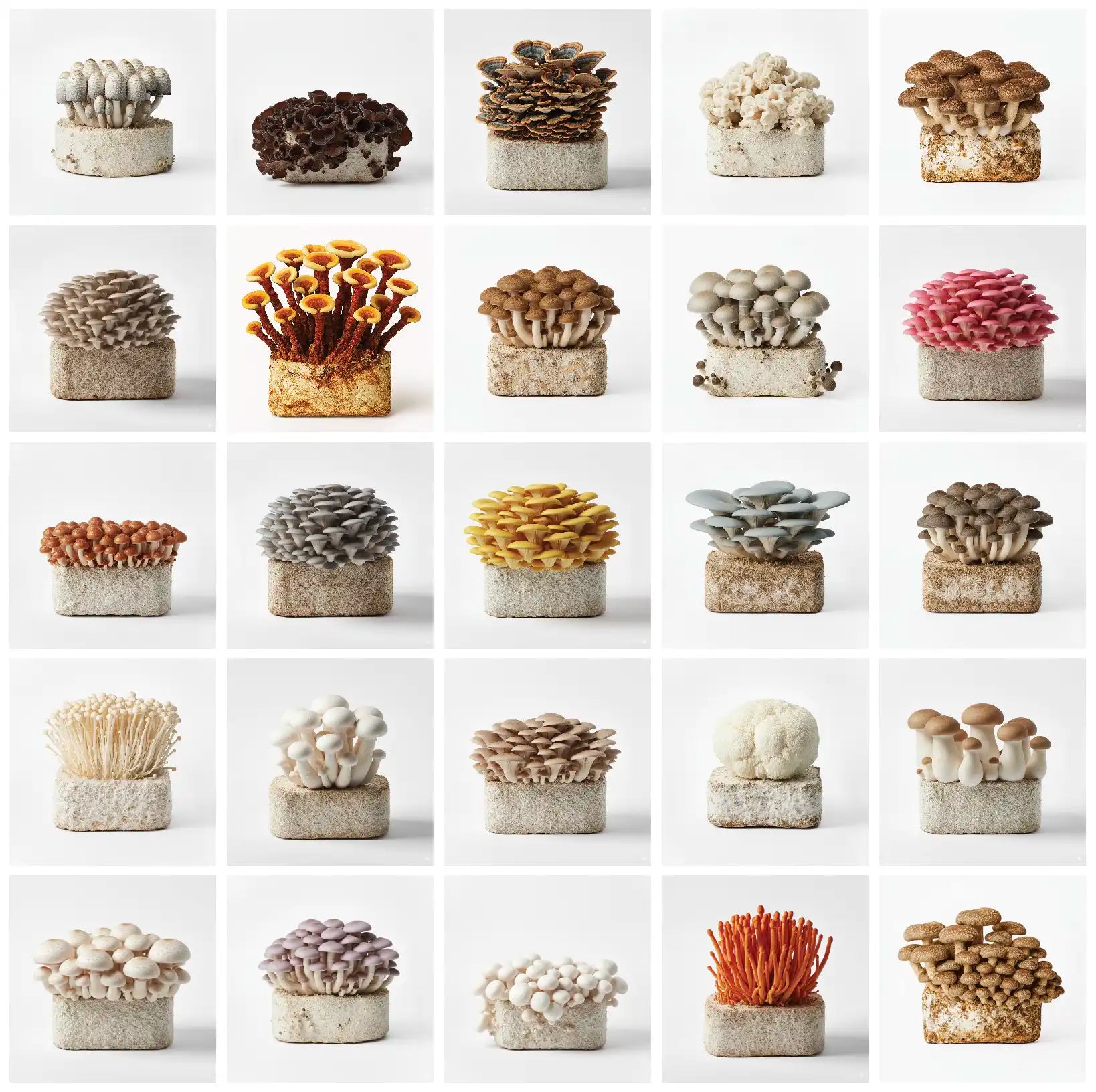




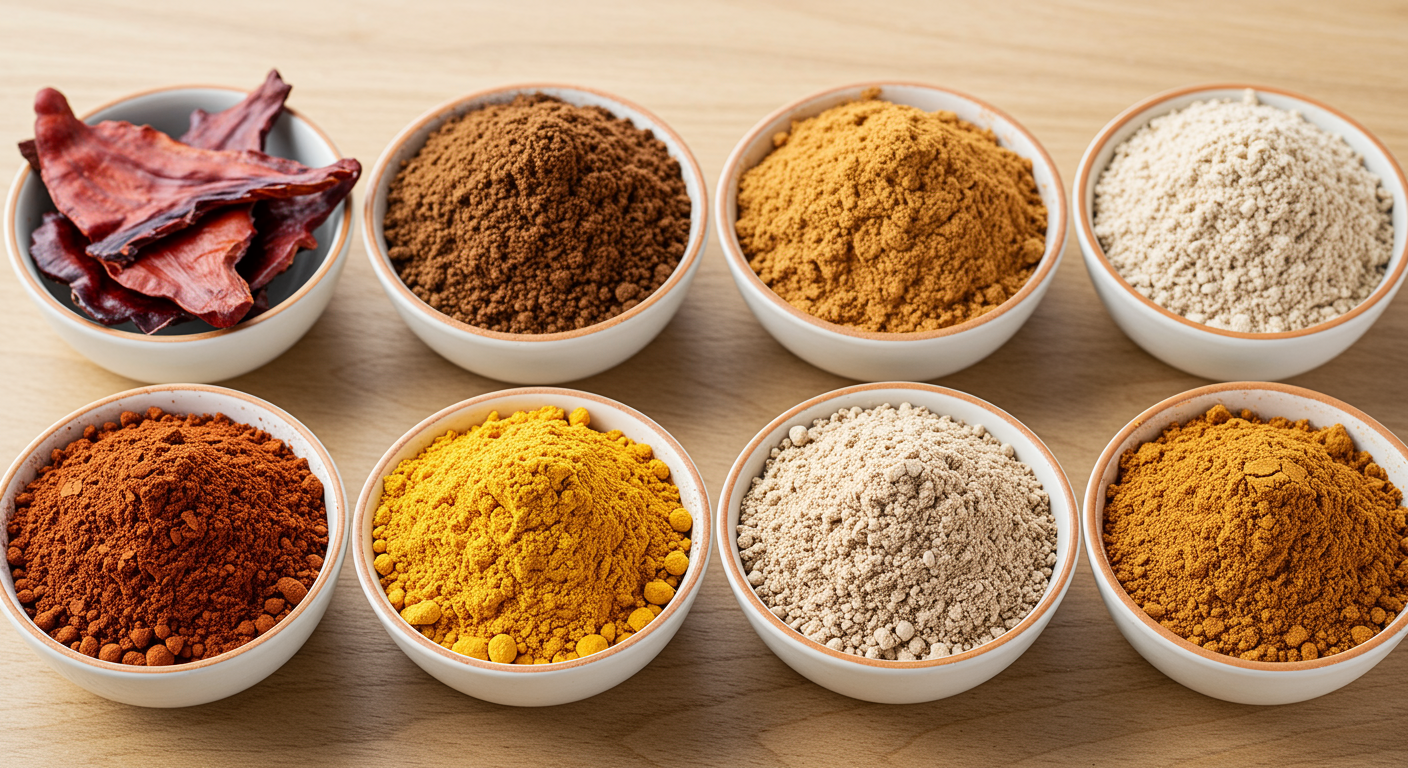

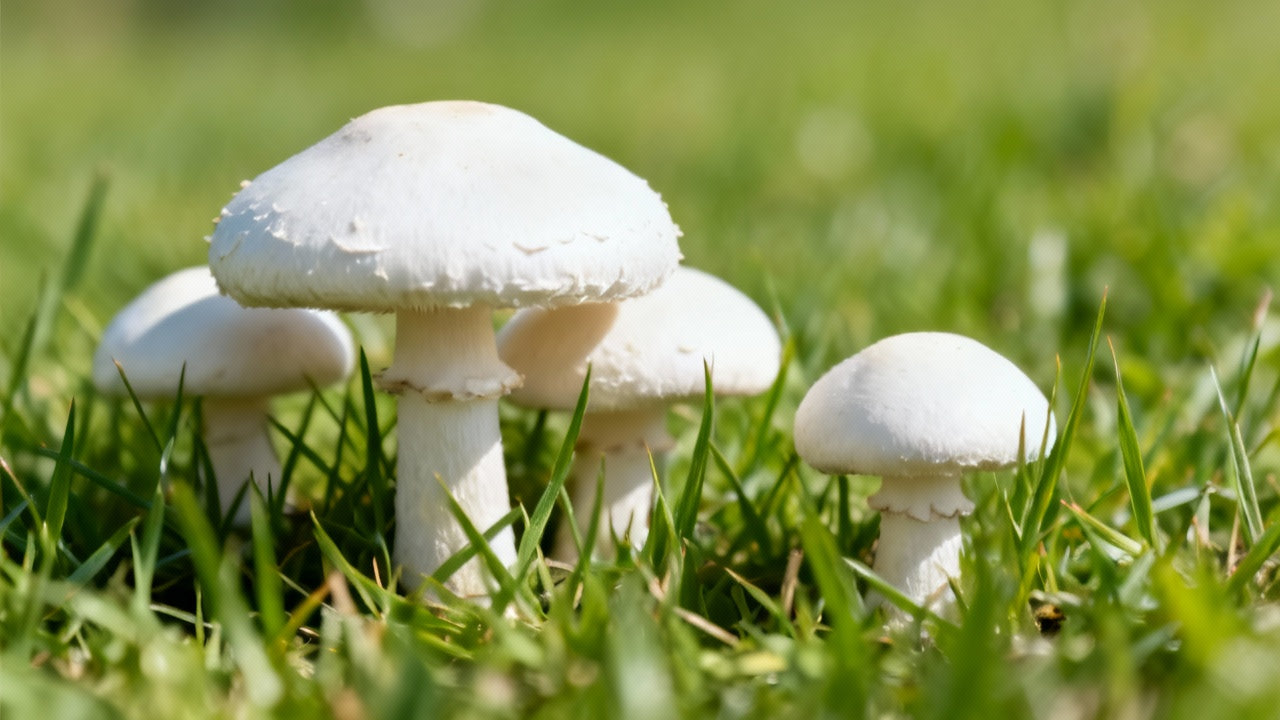
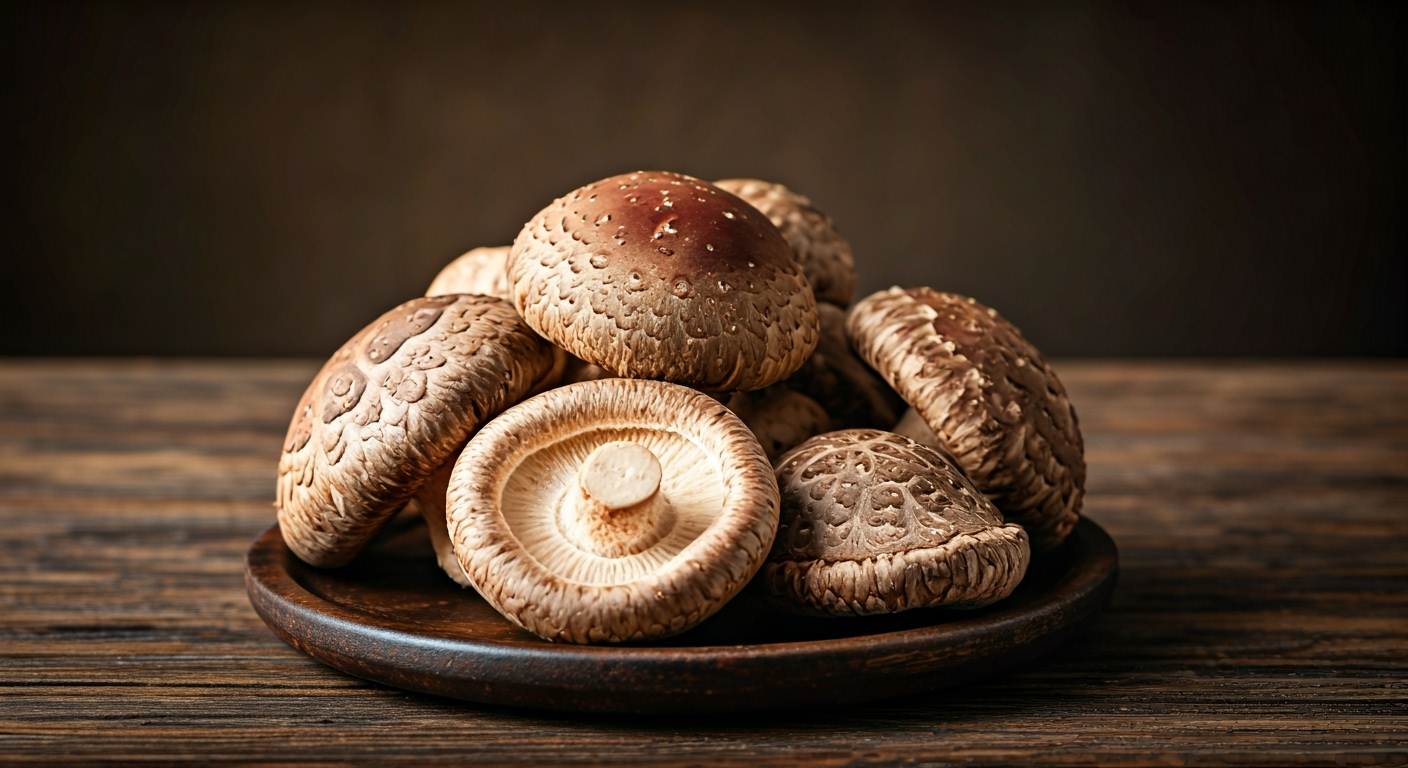
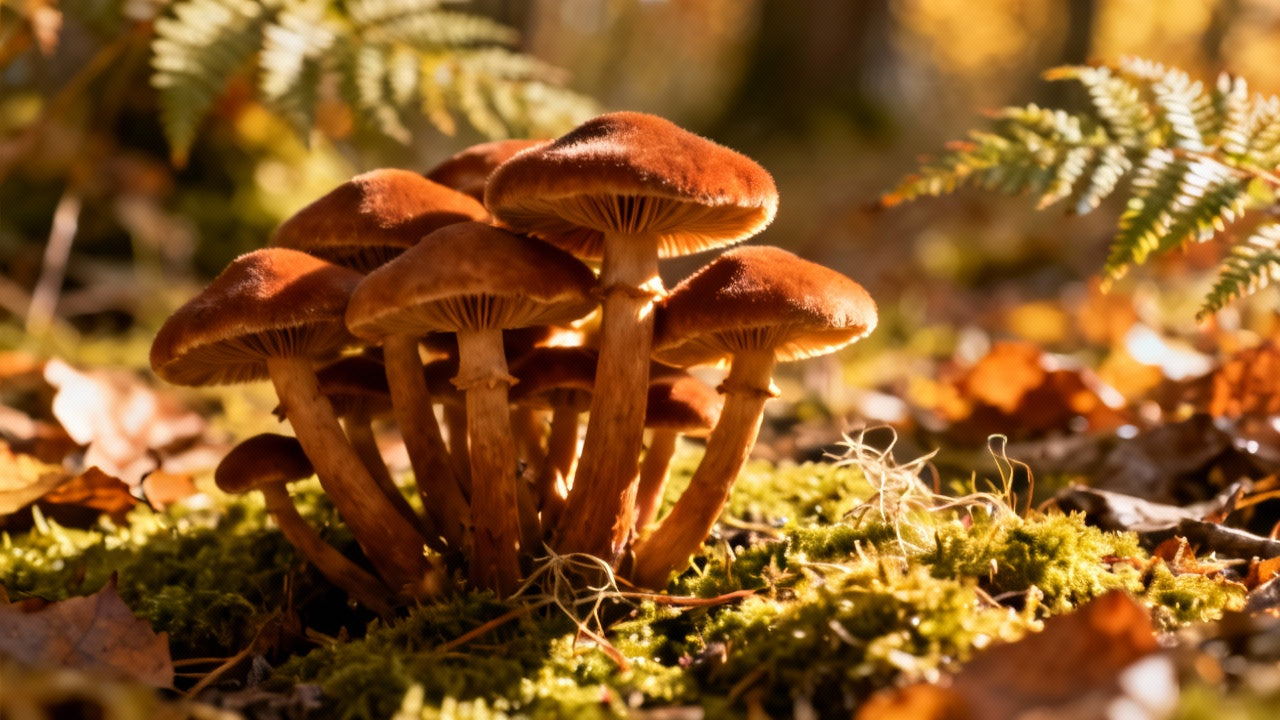
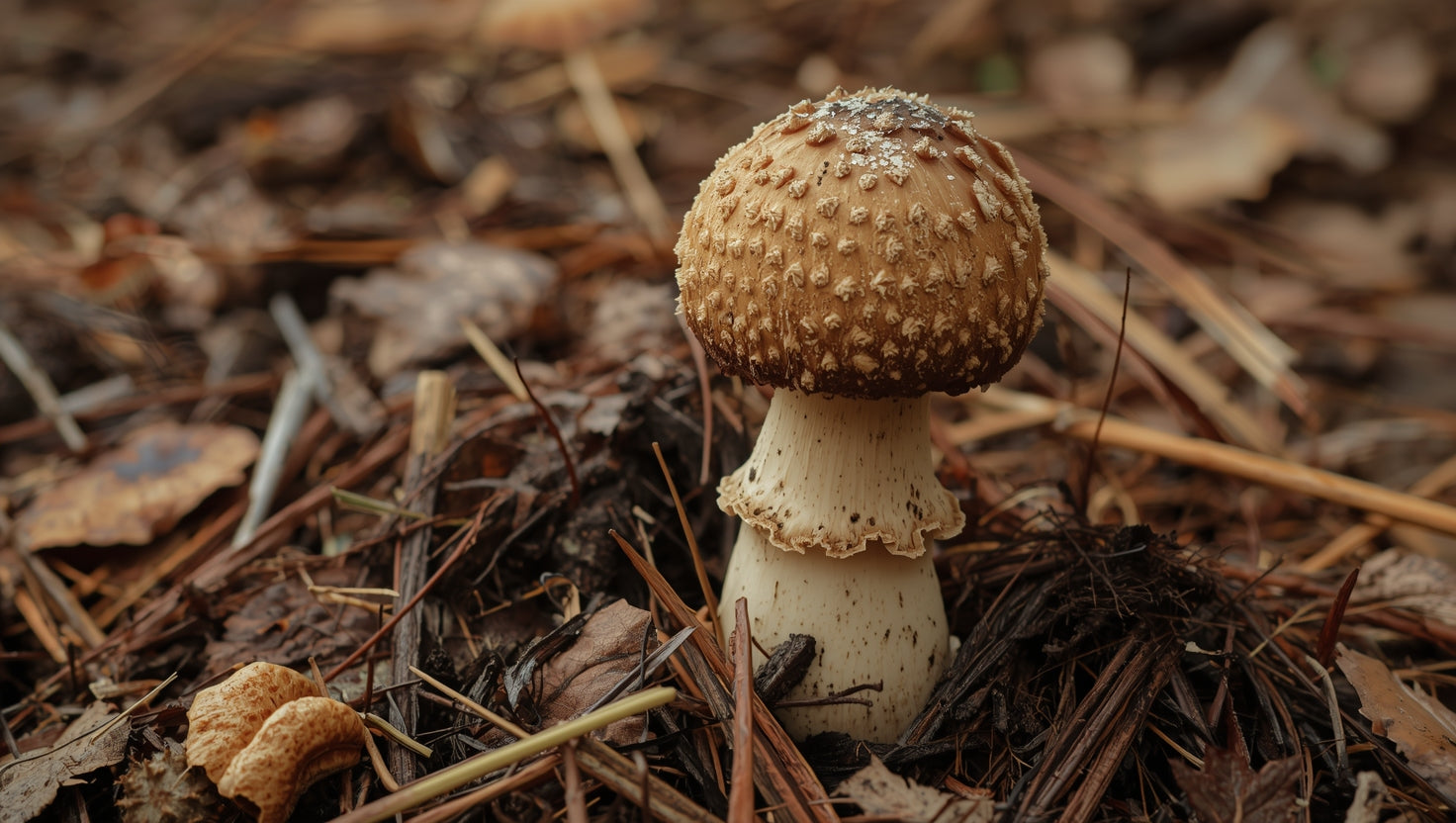
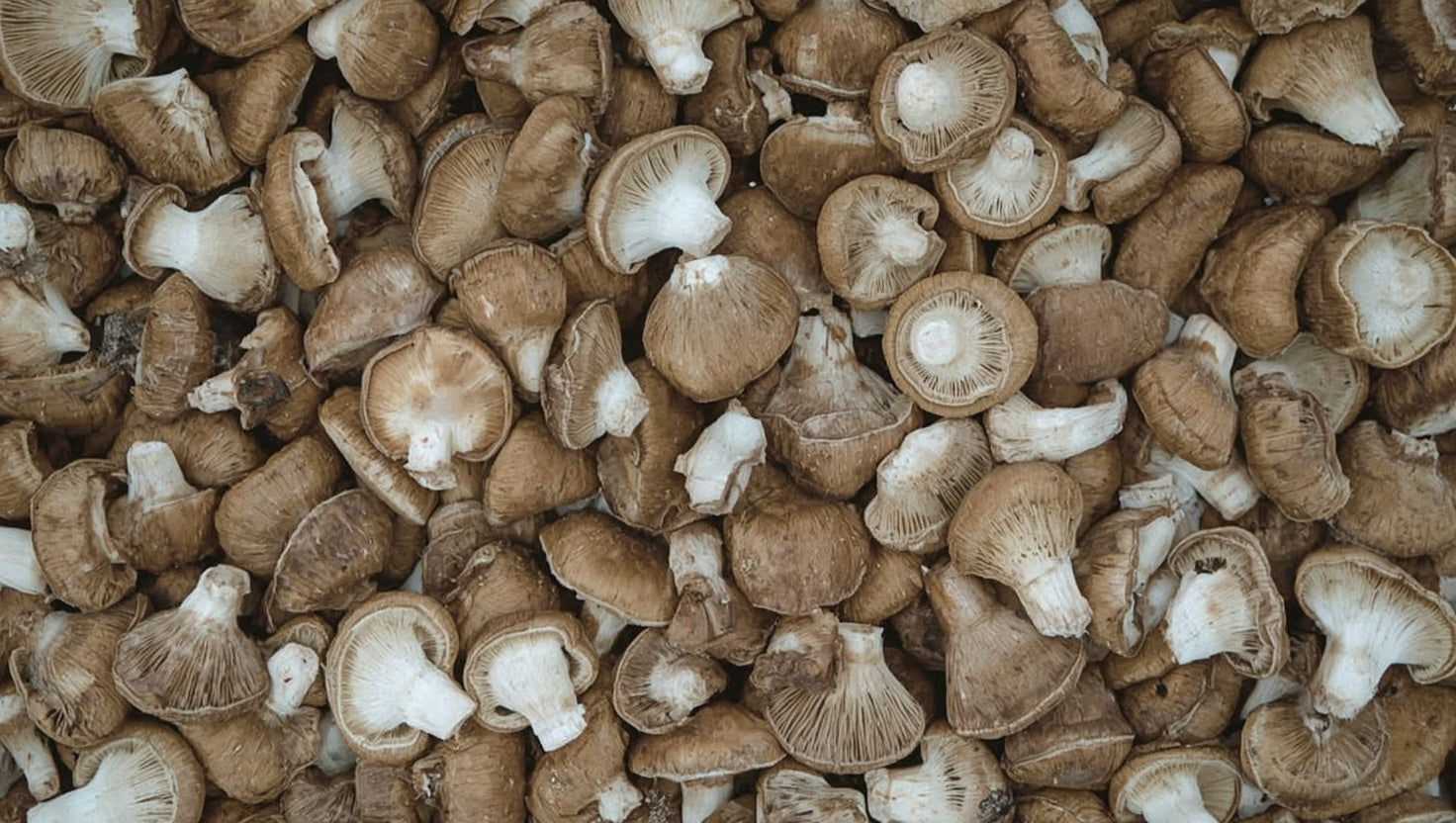
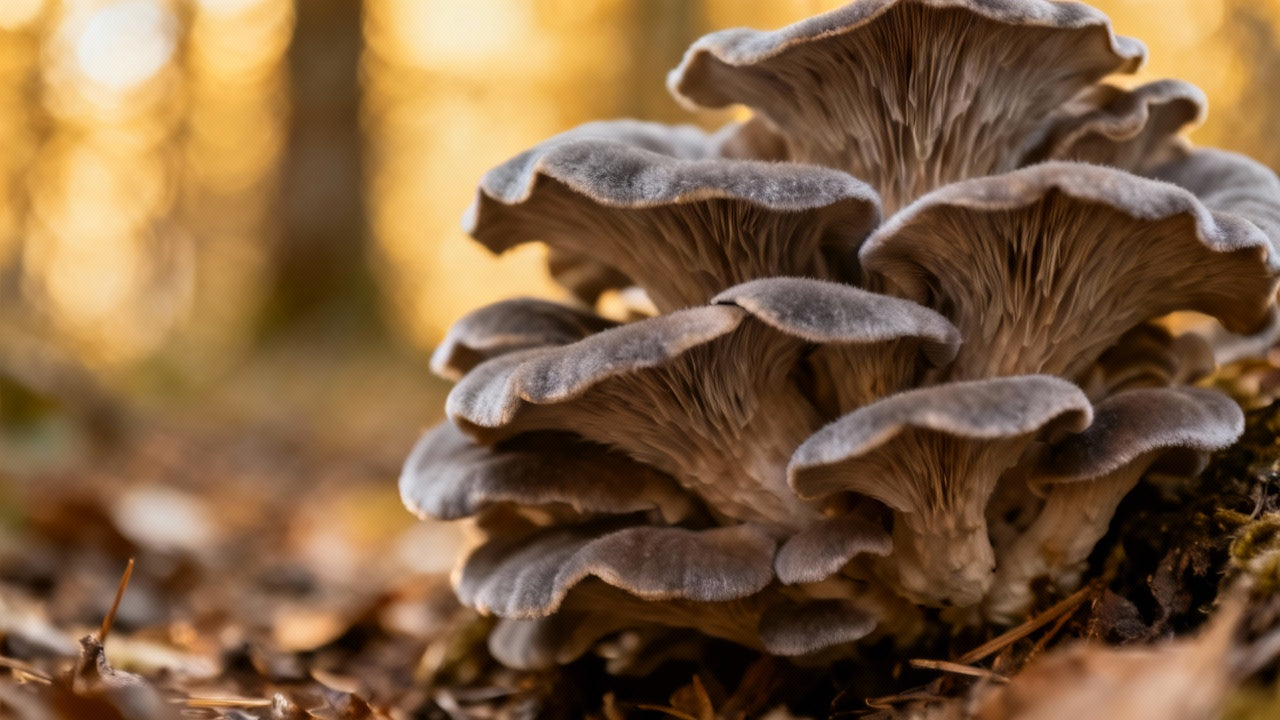
Share:
Benefits of Using a Mushroom Growing Kit: 10 Compelling Reasons to Start Growing Today
Best Mushroom Grow Kits for Beginners: The Ultimate 2025 Guide